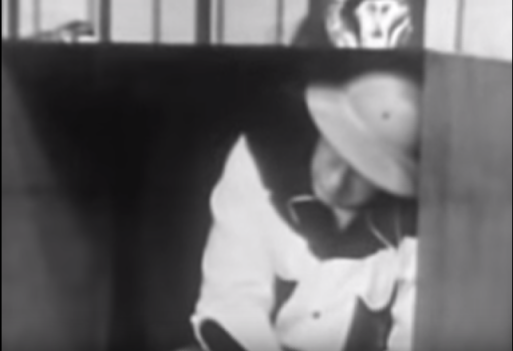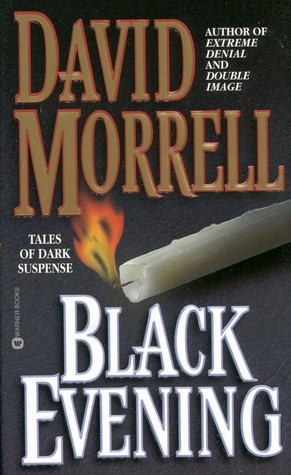What I watched: The March 16, 1949 episode of Howdy Doody. This episode would have aired in the afternoon on NBC, and is available to view on YouTube. The episode starred “Buffalo” Bob Smith as both himself and the voice of Howdy, with Bob Keeshan as Clarabell and E. Roger Muir directing.

This box now rents for $2000 a month.
What happened: This episode starts rather unusually, with a long shot of Howdy sleeping — face down, ass in the air, like the slut he is. The camera pans around to reveal that the other principals of the show are also deep asleep: Clarabell is hanging in a cage, haunting your dreams, while Buffalo Bill is sleeping in a ball in a cupboard for some reason. We slowly get a glimpse of the Peanut Gallery, filled in and silent. A telegram comes in from “Mister NBC”, and a sleepy Bob answers it. The telegram urges him to get onto the show, but Bob looks at the clock and sees it’s still 3 — not 5, which is Howdy Doody Time. After a phone call wakes him up a second time, he panics and gradually realizes that Clarabell has set the clock backwards so that he could sleep through the show. This is later revealed to be a running storyline, as on the previous episode Clarabell set the clock forward half an hour to try and get out of doing the show.
This starts a series of frankly savage pranks and counter-pranks. The Flap-Doodle produces a fake newspaper whose headline pronounces that Clarabell has been arrested for the dire crime of messing with the clock. This headline alarms Clarabell, who receives further punishment of four tickles. This is apparently also a reference to earlier episodes, where Clarabell tickled Bob and Howdy for calling him a girl. There are reams of psychoanalysis that beg to be written about this relationship.
Clarabell goes to the Flapdoodle looking for something to retaliate with. Bob spends quite a long time predicting that Clarabell won’t be able to get anything because he can’t talk, but after extensive sounding of his horn he manages to produce a live rabbit. This serves as a transition into an entirely different segment, where two women (the first we’ve seen on Howdy Doody) visit the studio with a group of rex rabbits for everyone to hold and look at. It has the feel of classroom show-and-tell, but at least it’s educational. The woman tells the audience the story of how two rex rabbits appeared in subsequent litters of common rabbits in answer to a farmer’s prayer. I was surprised to learn that this was actually true (possibly minus the theological elements.)
 Eventually, everyone will be replaced by a smaller, limbless version of themselves.
Eventually, everyone will be replaced by a smaller, limbless version of themselves.
After another thinly-veiled transition, Bob takes out some Howdy Doody hand puppets for the Peanut Gallery to play with. Having a slightly miniaturized, non-sentient version of yourself in a box somewhere sounds like an existential nightmare, but Howdy isn’t too bothered. Bob plays out a brief conversation with a little boy and, being the narc that he is, chastises the kid for saying he doesn’t like school and only likes his teachers a little. This is followed by a Mickey McGuire film segment, where even Bob kind of loses the plot of the silent comedy, and the traditional closing chorus of “It’s Howdy Doody Time.”
What I thought: I have to admit — the cold opening of this episode is easily the best thing I’ve seen on Howdy Doody so far. The show’s requisite slowness works in its favour this time, as the slow pan around the room reveals new layers to the ridiculous tableau of everyone sleeping. The actual joke — that Clarabell has made them all late for the show — isn’t that great, but the strange positions that each of the characters sleeps in makes the segment. There’s a sense in which we’ve caught these characters off guard, in their “after hours” mode — and yet, even a child would know that such a thing is impossible, because one of the characters is a puppet and the other a clown in full makeup, and Buffalo Bob almost certainly doesn’t sleep in a cupboard on the set. Thus the segment combines two different types of comedic transgression — transgression into the private realm, and transgression against the laws of reality. It’s also a gag that assumes the viewer has some knowledge of the program, at least enough to know when and how it’s supposed to begin. It’s not exactly Chaplin, but the execution of the joke is a cut above the standard.
The rest of the program is fine, if sometimes bewildering. The changes in subject matter — from a strange psychological exchange of punishments to an educational segment to a commercial ploy to a silent film — are abrupt and unconvincing, but they do stop each bit from running on too long. We get a glimpse of everything Howdy Doody could be at this point in time: warm, funny, strangely creepy, commercial, boring and sanctimonious.
That last quality, sanctimoniousness, appears specifically here in relation to work and education. Postwar America was settling into a homogenous ordering of time, the archetypical 9-to-5 job followed by evening entertainment on the radio and television, sleep, and then back to work again. Children’s schooling was organized in a mimicry of this, the better to prepare them for the work world. But work isn’t natural to us: children have to constantly be pulled from their inclination to idleness and doing whatever they want. In this episode’s drama, the main force of idleness is Clarabell, who has apparently continually been trying to get out of the show. Why he can’t is a question left unanswered: apparently clowns don’t have sick days, and may in fact be slaves who cannot quit. It’s assumed, instead, that Clarabell’s idleness is an element of chaos that prevents chronologically-regulated pleasures such as The Howdy Doody Show from proceeding as normal. So he has to be chastised, just as the young boy who doesn’t like school has to be chastised, because even the things we see in our leisure time must remind us of our duty of constantly producing — producing ourselves, producing television, and generally being awake at the right time and asleep at the right time.
Howdy Doody had already carved out the late-afternoon timeslot for children’s television, an arrangement that would last for decades. Kid’s TV would slot into that narrow space afforded to their leisure: after school, before the parents came home and made them do their homework. But under the Howdy Doody model, even their leisure was to be productive: by consuming moral entertainment, children would unknowingly be producing themselves as future workers, who would never be like the scary clown who doesn’t like to work.
Coming up next: A look at two news programs from different sides of the Atlantic.
Advertisements Share this:




